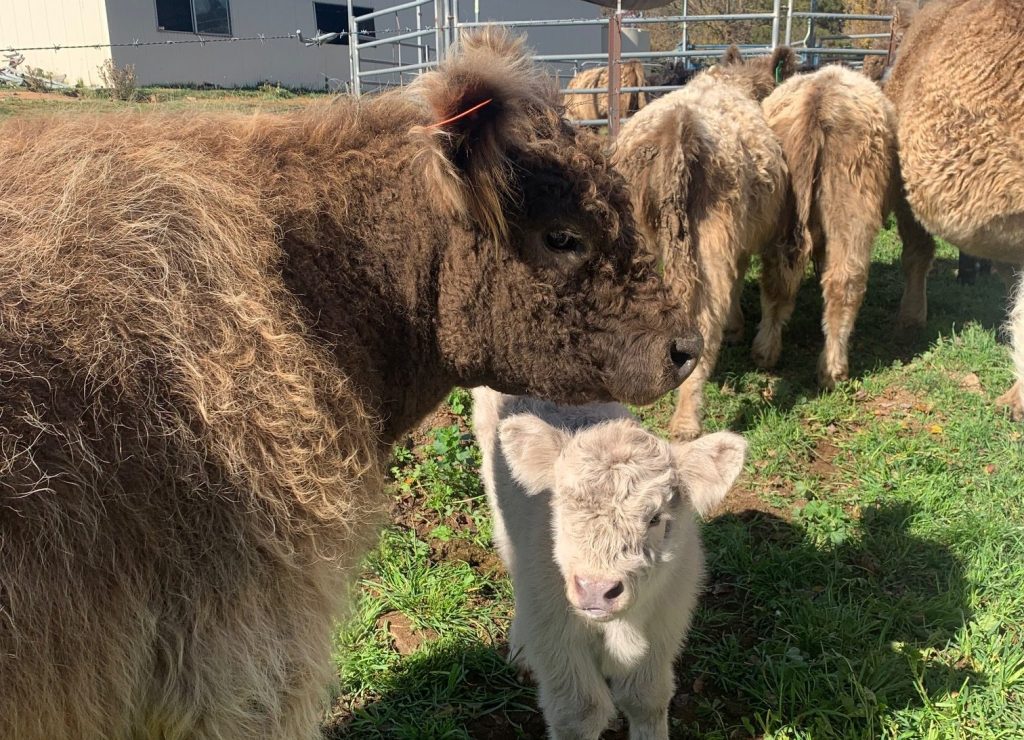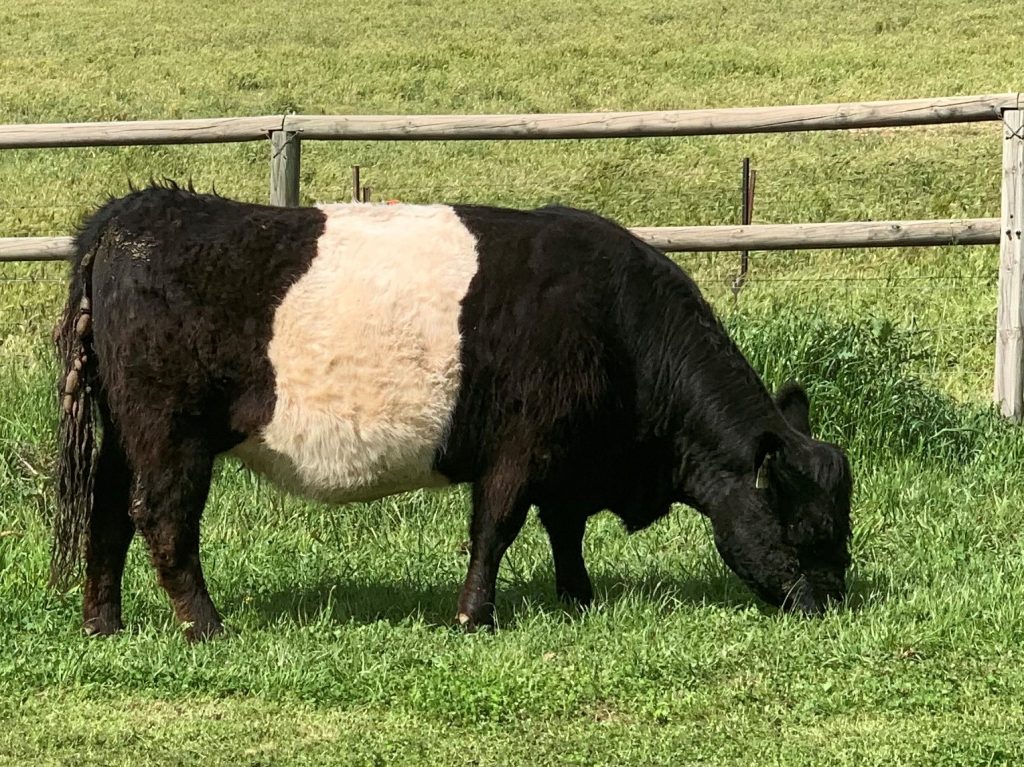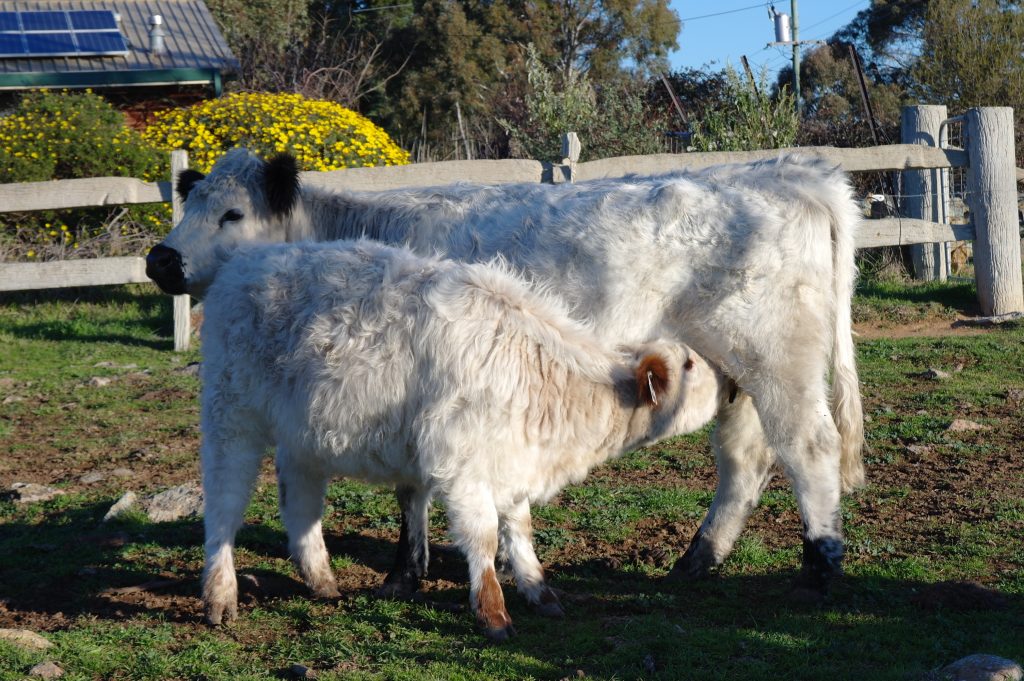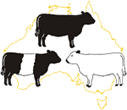Origins- Ancient Lineage, Modern Trait
The Galloway cattle breed is one of the oldest in the world, and according to some, one of the purist. The Scottish Galloway Cattle Society was established in 1877 and continues to maintain one of the oldest herd books in the world. We are proud to continue the tradition of protecting this unique breed.
They are a Landrace breed that developed from beginnings thousands of years ago. They are Celtic cattle in origin and have been found in Roman records. The specific weather conditions in Scotland led to specific adaptations and characteristics which are proving valuable to hobby and commercial breeders.
To survive in the Scottish conditions they developed quite different characteristics to other cattle breeds. These difference include a double hair coat, general hardiness and longevity that has modified their physiology in commercially useful ways such as ability to marble on grass, convert feed efficiently, resist pulmonary embolisms (brisket disease) and continually produce healthy calves with minimal intervention.
They are a old breed of cattle having some unique genetic differences to other breeds making it imperative to preserve these genetic traits.
Galloway Characteristics
Galloway breeders throughout the world consider the most desirable Galloway to be one of medium size; in contrast to some of the larger long legged breeds of cattle.
In conformation the Galloway will be found to carry its meat from behind the shoulder along the back to the tail, through the buttock and deep into the hock; for this reason Galloway breeders, for centuries, have concentrated on this type of conformation in their cattle.
The important constituent of good meat is its fat percentage. The Galloway will produce a quality carcase with the correct meat to fat ratio to cover over a large well marbled rib eye. This quality which gave them their ancient fame has been maintained by strict adherence within the breed.
All Galloways should have:
- a short and wide head with broad forehead and wide nostrils; without the slightest suggestion of horns or scurs
- large and prominent eyes
- ears that are moderate in length and broad, pointing forwards and upwards with a fringe of long hairs
- a neck that is moderate in length, clearn and filled well into the shoulders and the top in line with the back in a female and in a male naturally rising with age
- mellow, moderately thick skin covered in soft wavy hair with a mossy undercoat, wire or curly outer hair is objectionable.
The Three Galloway Breeds

Galloway
The oldest of the breeds. the Galloway has the oldest globally recognised poll herdbook.
Prized for their hardiness and mothering abilities.
They are a solid colour which can be dun (brown), silver, brown or red with white hair only permitted on the underline behind the navel.

Belted Galloway
The second and possibly the most famous, the Belted Galloway started as a Galloway Lakenvelder composite around 250 years ago.
The Dutch Lakenvelder breed, also known as the Dutch Belted Cattle, were a prized dairy breed known for converting lush pasture into rich milk without grain supplement.
The modern Belted Galloway has the distinctive belt of the Lakenvelder, the rich milk and like all Galloways is naturally polled.

White Galloway
The newest of the Galloway family and much misinterpreted.
The White Galloway started as a Galloway / British White Park composite around 70 years ago. There are also some White Galloways that have a foundation of Shorthorn cross White Park involvement and are related to Speckle Park.
The make up of a the White Galloway successor breed has been authenticated by molecular genetic research.
Miniature Galloways
Miniature Galloways have been bred specifically to create a small easy to handle animal suitable for hobby farmers. Fully grown Miniature animals are not higher than 125cm at the hip for male animals and 120cm at the hip for female animals.
There is no specific miniature gene in the Galloway breed and extreme care is taken to ensure that animals listed as miniature have a known ancestry of at five generations of animals meeting the miniature standard.
The colour patterns and breed type for the Miniature Galloways is the same as for non-miniature animals and include Miniature Galloway, Miniature Belted Galloway and Miniature White Galloway.
Registration and Herdbook
Our herdbook is maintained by Livestock and Business Centre. Individual animals can be searched for and viewed online.
Animals meeting the registration requirements can be added to the herdbook by members and associates by applying to the Registrar on the correct form.
When viewing the herdbook, the following specific breed and colour patterns identifiers apply.
| Galloway – Section 1 | Belted Galloway- Section 2 | White Galloway – Section 5 |
| Black | Black – Belted | White – Black Pointed |
| Dun | Dun – Belted | White – Black (animal is fully black in colour) |
| Red | Red – Belted | White – Red Pointed |
| Section 1 Appendix | Section 2 Appendix | |
Where an animal is ineligible for registration in the herdbook it may be eligible for registration in appendix or in the successor register. This register allows the recognition of animals with Galloway ancestry
Miniature animals will have a prefix of Miniature listed against the specific animal name. Breed codes apply as per the table above. During 2022, a new Miniature animal herdbook will be established to ensure the integrity of miniature and full size Galloway breeds.
Please contact the Registrar for information on eligibility of specific animals.
Hypotrichosis
Hypotrichosis is a autosomal genetic disorder affecting some breeds of cattle including Angus, Hereford and Jersey. During 2023 evidence was provided that Hypotrichosis has been introduced to the Belted Galloway Herd. Our response, based on the Australian experience with Alpha-Mannosidosis, is to eradicate the disorder from the Australian Belted Galloway herd.
For more information we have developed a overview of the disease and our response. It is based on information available as at March 2024. If you have concerns or wish to discuss the disorder please contact any of our Committee Members.
